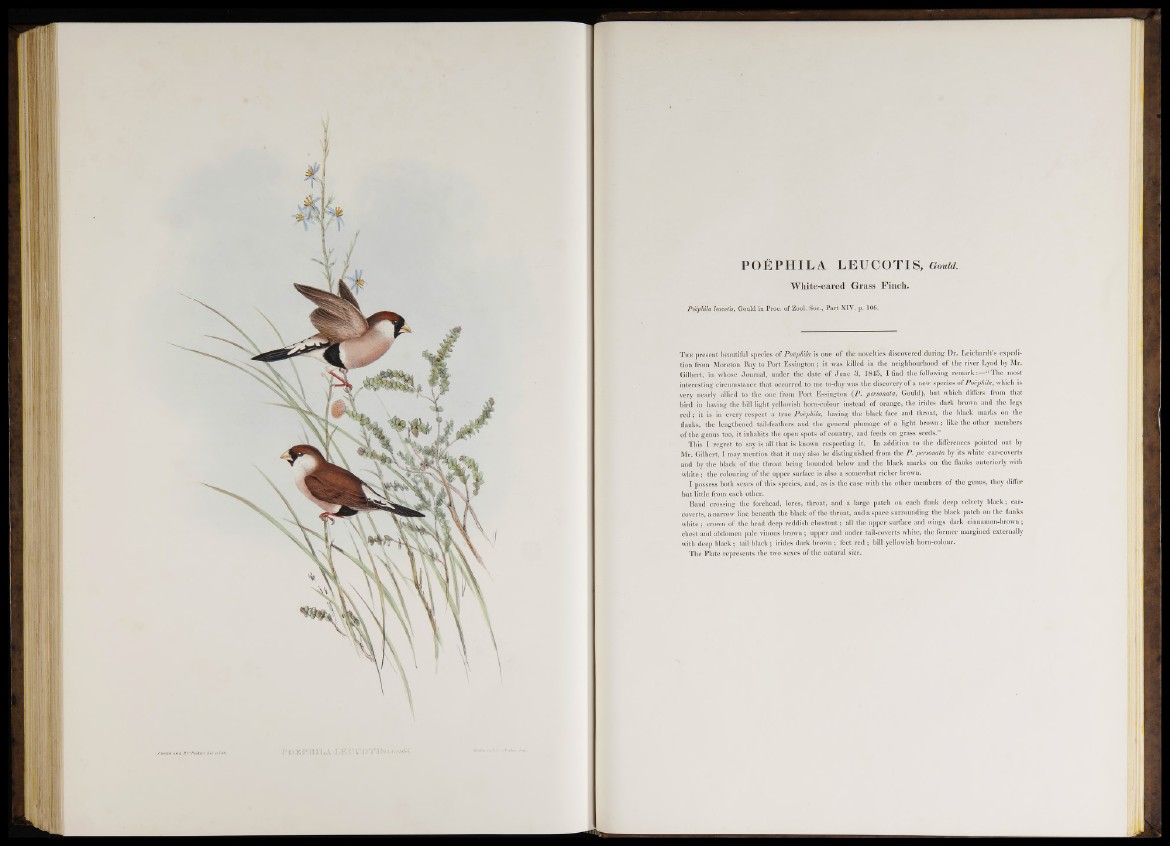
POEPHILA. LEUCOTIS, Gould.
White-eared Grass Finch.
Poephila leucotis, Gould in Proc. of Zool. Soc., Part XIV. p. 106.
T h e present beautiful species o f Poephila is one o f the novelties discovered during Dr. Leichardt’s expedition
from Moreton Bay to P o rt Essington ; it was killed in the neighbourhood o f the river Lynd by Mr.
Gilbert, in whose Journal, under the date o f Ju n e 3, 1845, I find the following rem ark :—“ The most
interesting circumstance that occurred to me to-day was the discovery of a new species o f Poephila, which is
very nearly allied to the one from Po rt Essington (P . personata, Gould), but which differs from that
b ird in having the bill light yellowish horn-colour instead o f orange, the irides dark brown and the legs
r e d ; it is in every respect a true Poephila, having the black face and throat, the black marks on the
flanks, the lengthened tail-feathers and the general plumage o f a light brown; like the other members
o f the genus too, it inhabits the open spots o f country, and feeds on grass seeds.”
This I regret to say is all that is known respecting it. In addition to the differences pointed out by
Mr. Gilbert, I may mention th at it may also be distinguished from the P . personata by its white ear-coverts
and by the black of the throat being bounded, below and the black marks on the flanks anteriorly with
w h ite ; the colouring of the upper surface is also a somewhat richer brown.
I possess both sexes o f this species, and, as is the case with the other members of the genus, they differ
but little from each other.
Band crossing the forehead, lores, throat, and a large patch on each flank deep velvety black; ear-
coverts, a narrow line beneath the black o f the throat, and a space surrounding the black patch on the flanks
white ; crown o f the head deep reddish c h e stn u t; all the upper surface and wings dark cinnamon-brown ;
chest and abdomen pale vinous brown ; upper and under tail-coverts white, the former margined externally
with deep b lack ; tail black; irides dark brown ; feet red ; bill yellowish horn-colour.
The Plate represents the two sexes o f the natural size.